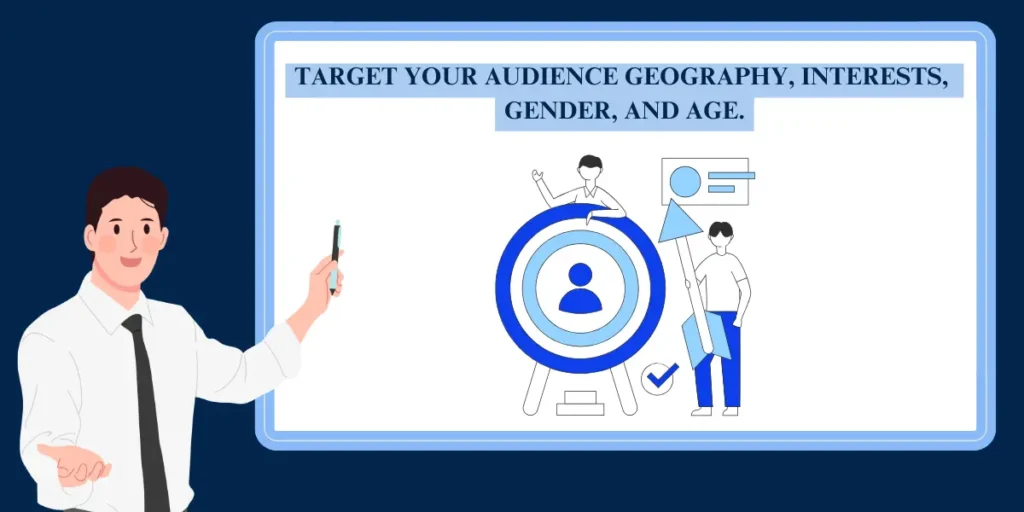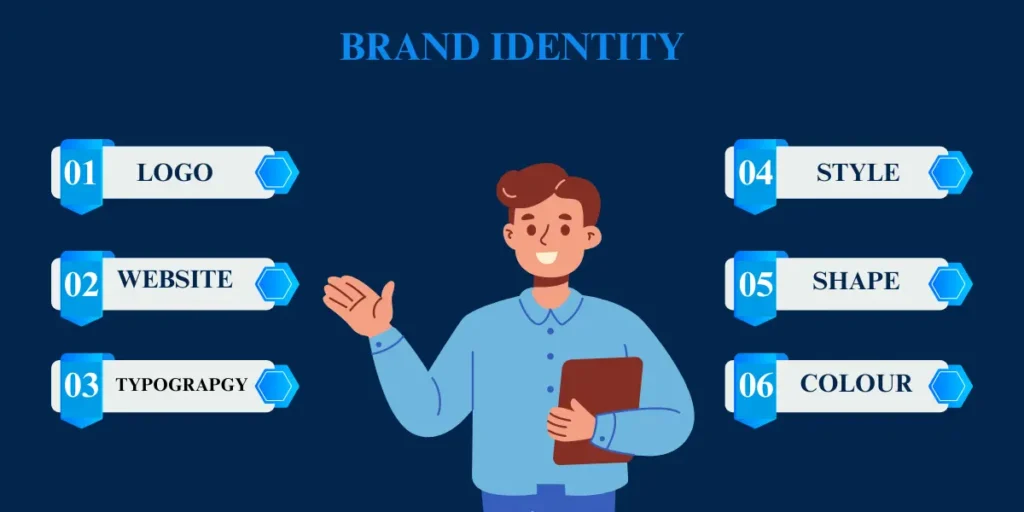In today’s competitive market, understanding branding is essential for any business that wants to stand out.
Branding is not just about a logo or a catchy slogan it is the identity and personality of your company.
A strong brand shares your values, mission, and unique offerings with your audience.
In this guide, we will explore brand positioning an important strategy that shapes how consumers see your brand and helps you stand out from competitors.
Let’s see what it is and how effective brand positioning can boost your business.
Table of Contents
ToggleWhat is Brand Positioning?
Here is a simple explanation, of what brand positioning is.
Imagine that a new coffee shop, “ABC,” enters a city crowded with established cafes. You know this by its name or brand.
So the way your customers view your company is known as its brand positioning.
It’s comparable to your brand’s reputation the attitudes and ideas people associate with your business upon hearing its name.
Brand positioning is essential for new and developing companies, making them stand out in a congested market.
By clearly articulating what makes your brand special and worthwhile, you can attract the correct clients and create loyalty.
It all comes down to developing a unique brand that appeals to your target market and makes you stand out from the competition.
Well-crafted brand positioning makes your message clearer and helps buyers understand why they should pick your goods or services over competing ones.
It is the cornerstone of long-term success and the development of trust.
Understanding Your Target Audience

Understanding your target audience deeply is crucial for startups and emerging businesses.
By knowing who your customers are and what they want, you can create products and marketing campaigns that resonate with them.
This builds stronger connections, increases customer satisfaction, and boosts your business’s chances of being successful.
Remember, happy customers are likely to become regular customers and recommend your brand to others.
Identifying Your Target Market
- Identify the age group of your ideal clients based on their geography, interests, gender, and age.
- Define specific segments of people most likely to be interested in your product or service.
- This helps you focus your marketing efforts and resources where they will have the most impact.
Analyzing Customer Needs and their Preferences
- Understand what your target audience wants and values.
- Analyze the issues that your product or service can help them with.
- Determine which features or benefits are most important to them.
- For more information, conduct market research, interviews, or surveys.
- Use this information to tailor your offerings and marketing messages to meet their needs better.
Defining Your Unique Value Proposition (UVP) –

Crafting a strong UVP is vital for startups and emerging businesses. It helps you define your brand identity and communicates what makes you special.
When done right, your UVP can attract the right customers, build trust, and drive sales.
It’s your chance to make a compelling case for why your brand is the best choice in the market.
What Sets Your Brand Apart?
- Find out what makes your brand out from your rivals.
- Identify the unique strengths, features, or qualities that make you stand out.
- Consider what problems you solve for your customers that others don’t.
Crafting a Compelling UVP That Resonates with Your Audience
- Your UVP should highlight the advantages of your good or service.
- It should address why customers should choose you over other options.
- Please keep it simple, clear, and easy to understand.
- Focus on the most important value you provide to your customers.
- Make use of language that clearly addresses the requirements and needs of your audience.
- Make sure your UVP is memorable and impactful.
Competitive Analysis –
For startups and developing firms to create strategies that work, they must first conduct a competitive analysis.
You can set yourself apart by analyzing the advantages and disadvantages of your rivals. This offers you a competitive advantage and draws in clients seeking something special.
Remember that the secret to long-term success is to stand out from the competitors.
Assessing Competitors’ Strengths and Weaknesses
- Analyze who are the market’s biggest rivals.
- Look at what they do well and what they struggle with.
- Analyze factors like product quality, pricing, customer service, and brand reputation.
- This helps you understand where you stand about others in your industry.
Identifying Opportunities for Differentiation
- Determine areas where you can differentiate your brand from competitors.
- Find gaps in the market that your competitors need to address.
- Think about the advantage you can provide to attract clients.
- Focus on strengths that set you apart and weaknesses you can improve upon.
- This lets you carve out your niche and stand out in a crowded market.
Developing Your Brand Identity –

Developing a strong brand identity is crucial for startups and emerging businesses to stand out.
A memorable brand image helps customers recognize and remember your brand.
Consistency across messaging, visuals, and tone builds trust and credibility with your audience.
It ensures that every interaction with your brand reinforces the same positive impression, leading to stronger brand loyalty and recognition.
Creating a Memorable Brand Image
- Define what your brand stands for and what it represents to customers.
- Design a logo, colour scheme, and visual elements that reflect your brand’s personality.
- Ensure your brand image is unique and memorable, leaving a lasting impression on customers.
Consistency Across Messaging, Visuals, and Tone
- Ensure all your communication, including website, social media, and advertising, reflects your brand identity.
- Use consistent messaging that reinforces your brand values and mission.
- Maintain a cohesive visual style across all platforms, including fonts, imagery, and design elements.
- Keep your tone of voice consistent in all communication, whether friendly, professional, or humorous.
Choosing the Right Channels –
Choosing the right channels is essential for effectively reaching your target audience and increasing brand visibility.
Combining online and offline strategies can create a comprehensive approach, ensuring potential customers see and remember your brand.
This helps build brand awareness, engagement, and loyalty.
Online Strategies
- Make use of social media to interact with your audience and distribute informative material.
- Invest in search engine optimization (SEO) to improve your website’s visibility in search results.
- Run online ads to target specific demographics and drive traffic to your site.
- Create a blog to provide informative and relevant content, establishing your brand as an industry authority.
Offline Strategies
- Attend industry events, trade shows, and networking opportunities to connect with potential customers personally.
- Distribute printed materials like brochures, flyers, and business cards to spread awareness.
- Partner with local businesses or sponsor community events to increase your brand’s local presence.
Implementing Your Brand Positioning Strategy –
Implementing your brand positioning strategy involves promoting your brand and ensuring consistency across all channels.
Putting Your Plan into Action
- Start by launching your marketing campaigns across the selected channels.
- Ensure all your messaging, visuals, and tone align with your brand identity.
- Train your team to communicate your brand values and UVP consistently.
- Use social media, email, and content marketing to promote your brand.
Monitoring and Adjusting Based on Feedback and Performance
- Track key metrics such as engagement, website traffic, and sales to measure the effectiveness of your strategy.
- Gather feedback from customers through surveys and reviews.
- Examine this data to find out what is effective and what requires improvement.
- Make adjustments to your strategy based on this feedback and performance data.
Measuring Success –
Key Metrics to Track Brand Positioning Effectiveness
- Brand Awareness: Measure how many people know about your brand through surveys and social media reach.
- Engagement: Track likes, shares, comments, and interactions on social media and other platforms.
- Website Traffic: Monitor the number of visitors to your website and how long they stay.
- Customer Feedback: Collect reviews and testimonials to understand customer satisfaction.
- Sales and Revenue: Analyze sales data to see if there is an increase in revenue and market share.
- Customer Retention: Measure the rate at which customers return to buy again.
Continuous Improvement Strategies That You Should Use
- Regularly Review Data: Consistently analyze the metrics to identify trends and areas for improvement.
- Customer Feedback: Act on feedback from surveys and reviews to make necessary adjustments.
- A/B Testing: Test different marketing messages and strategies to see which works best.
- Competitive Analysis: Keep an eye on competitors to stay ahead.
- Adapt and Evolve: Be flexible and ready to change your strategy based on the data.
Final Thoughts
Brand positioning is crucial for the success of startups and emerging businesses.
It helps you stand out in a crowded market, attract the right customers, and build trust and loyalty.
You can create a strong, memorable brand by understanding your target audience, defining your unique value proposition, and consistently communicating your brand identity.
Regularly monitor your performance and adjust your strategies based on feedback to keep improving.
Implement these strategies to strengthen your brand positioning and drive your business toward long-term success.
Start today and make your brand the preferred choice for your customers.
Frequently Asked Questions –
Q 1: What is brand positioning?
Brand positioning is how people see your brand, showing what makes it special and different from others.
Q 2: Why is brand positioning important?
Brand positioning makes your brand stand out, keeps customers loyal, and helps your business do better.
Q 3: How do I determine the best position for my brand?
Research your audience and competitors, find what makes you unique, make a clear statement, and get feedback.
Q 4: What are some common mistakes in brand positioning?
Common mistakes are unclear messages, inconsistency, ignoring competitors, overpromising, and not knowing your audience.
Q 5: Can brand positioning change over time?
Yes, it should change with the market, customer needs, and competitors, but keep your brand’s core the same.
Q 6: How can I measure the success of my brand positioning?
Measure success by tracking customer feedback, sales growth, brand recognition, and comparing with competitors over time.





